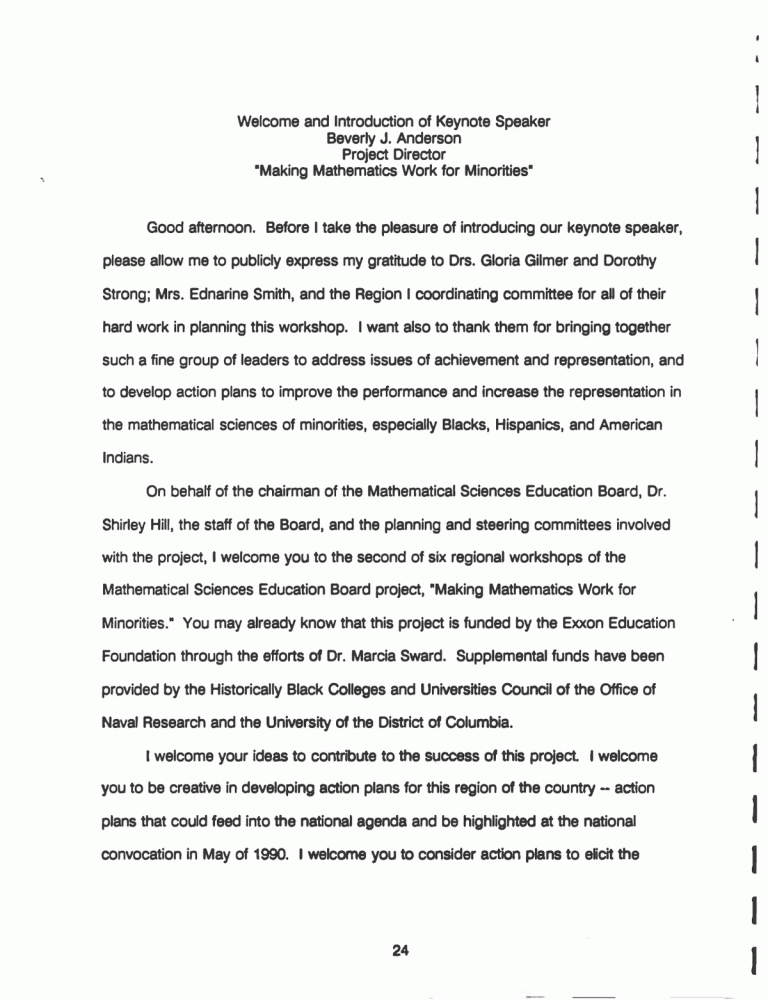How To Master Public Speaking?
Are you ready to become a master of public speaking? Well, you’ve come to the right place! Public speaking is a valuable skill that can boost your confidence and open doors to endless opportunities. Whether you’re giving a presentation at school or addressing a large audience, mastering public speaking can set you apart from the crowd.
So, how do you go from nervous wreck to captivating speaker? Don’t worry, we’ve got you covered! In this article, we’ll dive into the secrets of how to master public speaking, giving you the tools you need to succeed. From conquering stage fright to delivering a powerful message, you’ll learn the techniques that will transform you into a confident and persuasive speaker.
Whether you’re an introvert or an extrovert, young or old, it’s never too early or too late to start honing your public speaking skills. So, get ready to unlock your potential, dazzle your audience, and become a public speaking superstar! It’s time to embark on this exciting journey together. Let’s dive in and discover the art of mastering public speaking!
1. Prepare and practice your speech thoroughly.
2. Use visual aids to enhance your message.
3. Focus on body language and facial expressions.
4. Engage the audience through storytelling and humor.
5. Overcome nervousness by deep breathing and positive self-talk.
6. Maintain eye contact and speak with confidence.
7. Evaluate and learn from each speaking opportunity.
Follow these steps to become a confident and captivating public speaker!

“`
Mastering the Art of Public Speaking: Your Guide to Captivating an Audience
Public speaking is an essential skill in today’s world, whether you’re presenting to a large audience, pitching a business idea, or even giving a toast at a wedding. However, many people find the thought of speaking in public daunting and anxiety-inducing. But fear not! With the right techniques and mindset, anyone can become a confident and engaging public speaker. In this comprehensive guide, we will explore proven strategies, tips, and tricks to help you master the art of public speaking and leave a lasting impression on your audience.
Overcoming the Fear: Conquering Stage Fright and Building Confidence
Before we delve into the techniques of public speaking, let’s address the elephant in the room: stage fright. Even the most experienced speakers have battled with nerves. The key to overcoming stage fright is to understand that it’s perfectly normal and can be managed effectively. One effective strategy is visualization – picture yourself delivering a successful speech, with the audience engaged and applauding. This mental imagery will help build your confidence and reduce anxiety.
Another powerful tool for overcoming stage fright is practice. Familiarize yourself with your speech or presentation, rehearse it multiple times, and even consider recording yourself to identify areas for improvement. By practicing, you’ll gain a sense of mastery over your material, which will significantly boost your confidence and help you stay calm under pressure.
Additionally, remember that the audience wants you to succeed. They are there to listen and learn from you, so embrace their support and focus on delivering valuable content. By shifting your perspective from self-doubt to a desire to serve your audience, you’ll feel more at ease and in control.
The Power of Voice: Developing a Strong Vocal Presence
Your voice is the most critical tool in your arsenal as a public speaker. It can captivate, engage, and inspire your audience. To develop a strong vocal presence, start by paying attention to your breathing. Deep, diaphragmatic breathing will help you project your voice and control nerves. Practice breathing exercises regularly to strengthen your breath support.
Another crucial aspect of voice modulation is pacing. Speaking too fast can make your words jumbled and difficult to follow, while speaking too slowly can bore your audience. Find a comfortable pace that allows for clear enunciation and natural pauses. Varying your pace strategically throughout your speech can help maintain engagement and emphasize important points.
Lastly, make an effort to infuse your voice with enthusiasm and passion. Your tone should reflect the emotions and energy you want to convey. Speak with conviction and conviction, and your audience will be compelled to listen.
The Art of Storytelling: Crafting Compelling Narratives
Humans have been captivated by stories since ancient times. When it comes to public speaking, storytelling is a powerful technique for connecting with your audience on an emotional level and making your message memorable. Incorporate personal anecdotes, case studies, or relevant examples into your speech to bring your content to life.
A well-crafted story follows a clear structure: a captivating opening to grab attention, a compelling narrative with rising tension, and a satisfying resolution. Use vivid language, descriptive details, and engaging dialogue to transport your audience into the world of your story. Practice the delivery of your stories to add authenticity and emotion, aiming to create an emotional connection with your listeners.
When using storytelling, consider the purpose and relevance of your stories. Ensure they support your key message and reinforce your main points. Avoid tangents or stories that may distract from your overall objective. Remember, the goal is to engage, enlighten, and inspire your audience through the power of storytelling.
The Impact of Body Language: Commanding the Stage with Confidence
While your words and voice are crucial, your body language can also greatly impact how your audience perceives you. The way you stand, move, and gesture on stage affects your credibility, influence, and connection with the audience. Adopting confident and open body language is key to commanding the stage.
Start by maintaining an upright posture, with your shoulders back and head held high. Avoid fidgeting or crossing your arms, as these actions can indicate nervousness or defensiveness. Instead, use purposeful gestures to emphasize your points and engage with your audience. Effective gestures can include using your hands to illustrate concepts, pointing to key visuals, or making deliberate movements to convey enthusiasm.
Eye contact is another essential element of body language. Make an effort to connect with individuals in the audience by scanning the room and maintaining eye contact for a few seconds with different people. This establishes trust and creates a personal connection with your listeners. Remember, body language should complement and reinforce your spoken words, so practice integrating gestures and maintaining confident posture during your rehearsals.
Effective Visual Aids: Enhancing Your Delivery with Powerful Presentations
In today’s digital age, visual aids are a valuable tool for supporting your message and keeping your audience engaged. Whether you’re using slides, props, or multimedia presentations, the key is to enhance, not distract from, your delivery. Visual aids are meant to supplement and reinforce your content, not replace it.
When creating slides or visual aids, keep them simple and visually appealing. Use clear fonts, concise bullet points, and relevant visuals that reinforce your key points. Avoid cluttered slides with excessive text or complicated graphics that can overwhelm your audience and divert their attention. Remember, your visual aids should support your speech, not become the main focus.
During your presentation, use visual aids strategically, revealing them at the appropriate moments to reinforce your message or provide additional information. Maintain eye contact with the audience, utilizing the visual aids as prompts rather than reading directly from them. This approach will help you maintain a strong connection with your listeners while utilizing the power of visual support effectively.
The Influence of Confidence: Building Rapport and Engaging Your Audience
Confidence is contagious, and as a public speaker, having confidence in your abilities and your message is paramount. Building rapport with your audience starts from the moment you step on stage. Begin with a strong opening that grabs attention and establishes your credibility and purpose.
Engaging your audience involves creating a comfortable and interactive environment. Encourage participation through rhetorical questions, brief activities, or moments for reflection. Incorporate humor where appropriate to lighten the mood and connect with your listeners on a personal level.
Throughout your speech, ensure your content is well-organized and flows logically. Transition smoothly between different sections to maintain attention and comprehension. Utilize vocal variety, storytelling, and visual aids to keep your audience engaged and interested in your message.
Mastering Public Speaking: Continual Growth and Improvement
Now that you’re equipped with strategies and techniques to master public speaking, it’s essential to remember that becoming a proficient speaker is an ongoing journey. The more you practice and seek feedback, the better you’ll become. Embrace opportunities for public speaking, whether it’s joining a local speaking club, volunteering for presentations, or seeking speaking engagements.
Always strive for growth by studying great speakers, exploring different speech styles, and refining your own unique approach. Remember, confidence and skill in public speaking develop over time, so be patient with yourself and enjoy the process. With consistent practice, the art of public speaking will become second nature, enabling you to inspire and influence others with your words.
“`
Key Takeaways: How to Master Public Speaking
- Practice speaking in front of a mirror to improve your body language and delivery.
- Breathe deeply and speak slowly to calm your nerves and maintain composure.
- Prepare thoroughly by researching your topic and creating a well-structured speech.
- Engage with the audience through eye contact, gestures, and interactive techniques.
- Gain confidence by starting with smaller speaking engagements and gradually working your way up.
Frequently Asked Questions
Public speaking can be quite challenging for many individuals, but with the right techniques and practice, it is definitely something that can be mastered. Below are five commonly asked questions about mastering public speaking:
1. How can I overcome my fear of public speaking?
Overcoming the fear of public speaking is a common concern for many people. One effective way to conquer this fear is through preparation and practice. By thoroughly researching and organizing your presentation, you will feel more confident and knowledgeable about your topic. Rehearsing your speech multiple times will also help you become more comfortable with your material and the act of speaking in public. Additionally, focusing on positive self-talk and visualizing success can contribute to reducing anxiety.
Apart from preparation and practice, seeking opportunities to speak in public can help build your confidence over time. Start by volunteering for small speaking engagements, such as delivering a short presentation in front of colleagues or friends. Gradually increase the difficulty level and audience size as you become more comfortable. Remember, everyone makes mistakes, and the more you expose yourself to public speaking, the more you will learn and grow.
2. How can I engage and captivate my audience during a speech?
Engaging and captivating your audience is crucial for an effective speech. One effective strategy is to start your speech with a compelling opening that grabs the attention of your audience. You can begin with a relevant story, a thought-provoking question, or a surprising statistic. This will immediately hook your listeners and make them eager to hear what you have to say.
Incorporating visual aids, such as slides or props, can also enhance audience engagement. Visual elements can help reinforce your message and make it more memorable. However, be cautious not to rely too heavily on visual aids, as you want to maintain a strong connection with your audience through eye contact and body language.
Furthermore, involving your audience in your speech can boost engagement. Encourage them to participate by asking questions, conducting interactive activities, or requesting their input on certain topics. This creates a sense of inclusion and makes the speech more interactive and enjoyable for everyone.
3. How can I improve my speaking skills and delivery?
To improve your speaking skills and delivery, practice is key. Start by recording yourself while giving a speech or presentation. This will allow you to analyze your delivery, identify areas for improvement, and work on specific aspects such as vocal tone, pacing, and gestures.
Another helpful strategy is to join a public speaking club or organization. Groups like Toastmasters International provide a supportive environment for individuals to practice and receive constructive feedback from peers. These clubs often offer various speaking opportunities, such as impromptu speaking, prepared speeches, and evaluations, which can help you refine your skills.
Additionally, studying speeches delivered by accomplished public speakers can provide valuable insights. Observe their delivery techniques, body language, and how they engage their audience. Analyze their use of rhetorical devices, such as storytelling, humor, and a well-structured narrative. Incorporating these techniques into your own speeches can significantly enhance your speaking skills and delivery.
4. How can I effectively manage nervousness during a speech?
Nervousness is a common experience for many public speakers, but there are techniques to effectively manage it. One helpful approach is deep breathing exercises, which can help calm your nerves and regulate your heart rate. Prior to your speech, take a few moments to practice slow, deep breaths, inhaling through your nose and exhaling through your mouth. This simple technique can help reduce anxiety and promote relaxation.
Another effective strategy is to reframe nervousness as excitement. Often, the physical sensations of nervousness and excitement are quite similar. By reframing your nerves as excitement, you can channel that energy into your delivery, making your speech more dynamic and engaging.
Additionally, being well-prepared and having confidence in your material can greatly reduce nervousness. Practice your speech thoroughly, know your content inside out, and be prepared to answer questions or handle unexpected situations. Understanding that you are well-prepared will boost your confidence and help manage nervousness.
5. How can I connect with my audience on an emotional level?
Connecting with your audience on an emotional level is essential for building rapport and making your speech impactful. One effective way to achieve this is through storytelling. Share personal anecdotes or real-life examples that evoke emotions and relate to your topic. Storytelling allows your audience to connect with you on a deeper level and makes your speech more relatable and engaging.
Another technique is to use vivid language and descriptive imagery. Paint a picture with your words, appealing to the senses of your audience. By using sensory language, you can evoke emotions and create a lasting impression on your listeners.
Furthermore, showing genuine passion and enthusiasm for your topic can be contagious. If you are genuinely invested in your subject matter, your audience will pick up on that energy and be more likely to connect with you. Let your passion shine through your words, body language, and facial expressions, demonstrating your belief in and commitment to your message.
Summary
Public speaking doesn’t have to be scary! By following a few simple tips, you can become a great speaker. First, practice your speech and know your content well. Use visual aids and engage with your audience to keep them interested. Remember to speak clearly and confidently, and use gestures to emphasize your points.
Second, control your nerves by taking deep breaths and imagining yourself succeeding. Don’t be afraid to make mistakes – it’s all part of the learning process. And finally, prepare for unexpected situations by having a backup plan. With practice and confidence, you can master public speaking and wow any audience!
In conclusion, public speaking is a skill that can be learned and improved. By practicing, staying confident, and preparing for the unexpected, you can become an excellent speaker. So go out there, take a deep breath, and show the world what you’ve got!




